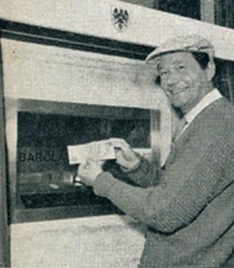Luther George Simjian - The World's First ATM
Tuesday, December 12, 2023
Today many use ATMs for easy access to their finances but few know that ATMs are an Armenian invention. The first person to meet the challenge of creating a machine where people can cash money was Luther George Simijian, an Armenian-American inventor born in 1905 in Aintab, Ottoman Empire.
Although his original invention – Bankograph – was meant for depositing cash, coins and cheques, and didn’t intend to give out cash, it is widely accepted that he was the first to come up with the idea of a hole-in-a-wall style cash operations machine.
He had the first Bankograph under his patent installed in 1961 by the City Bank of New York. But, unfortunately it didn’t have sufficient success among the public. Keep in mind that back then the so-called Bankograph didn’t have cash dispensing features, and only allowed you to deposit money and cheques. The public was cautious, and the machine was only somewhat popular among gamblers and prostitutes who did not want to have face-to-face interaction with the banks when depositing their money.
What truly made ATMs popular as we know them today, was the fact that cards started being used for verifying the identity of the user, and that allowed dispensing cash from your own bank account. This technology coupled with the already existing invention of Simijian drove interest to ATMs across Europe and in Japan later in the 60s.
Being a very avid inventor, Simijian had registered over 200 patents over his lifetime. As he was a passionate photographer at a young age, most of his inventions were in the areas of optics and electronics. Apart from inventing the first prototype of an ATM, he is known for his pioneer work in the creation of a flight simulator, technical improvements of a teleprompter, and several other inventions.





